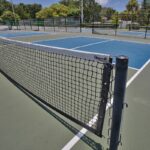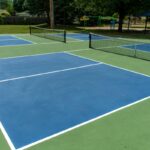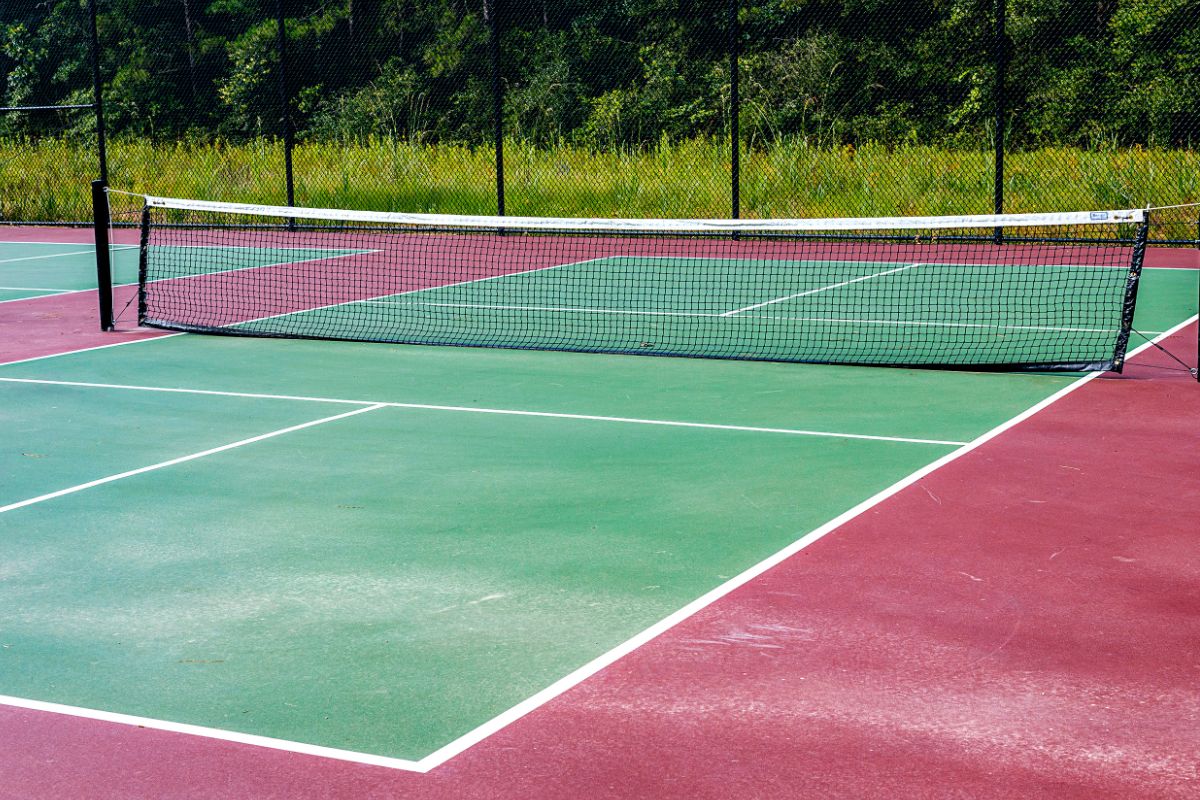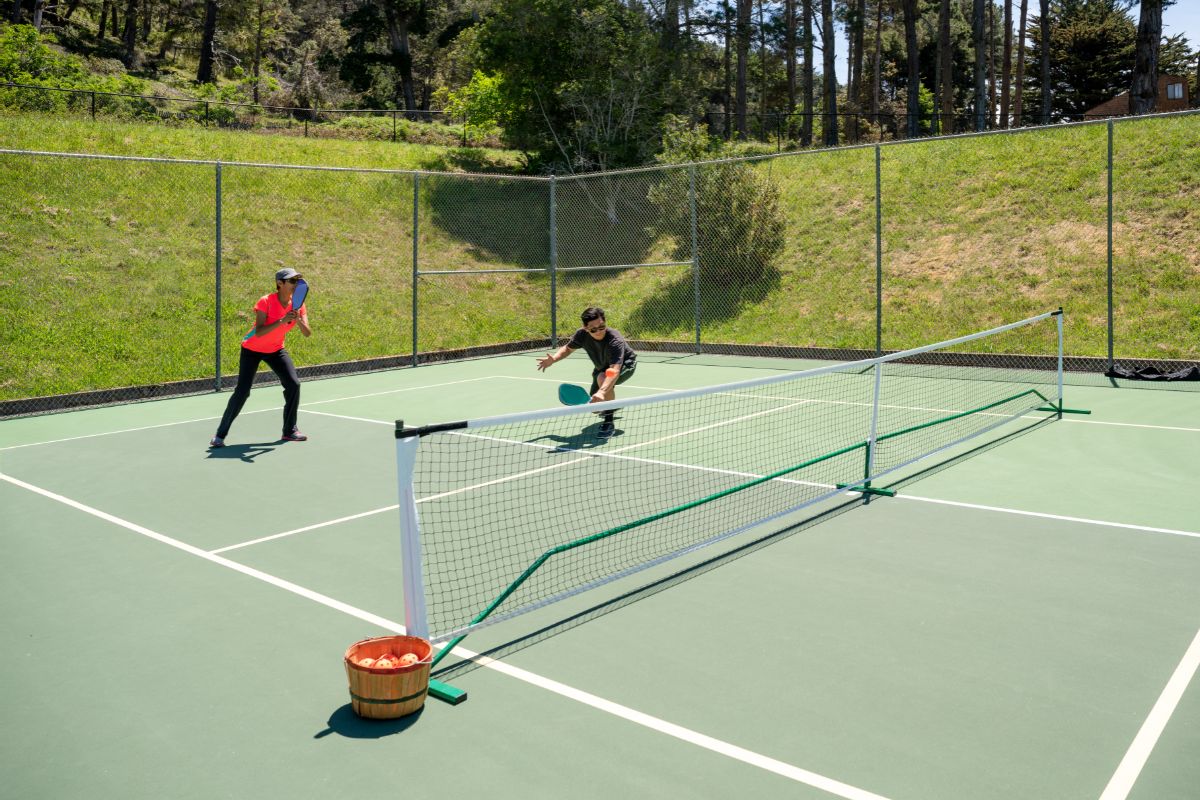Pickleball is one of the fastest growing sports in the world, and for good reason. Whether you’re looking for an intense workout or just a fun way to spend the afternoon outside with friends, pickleball has something to offer everyone.
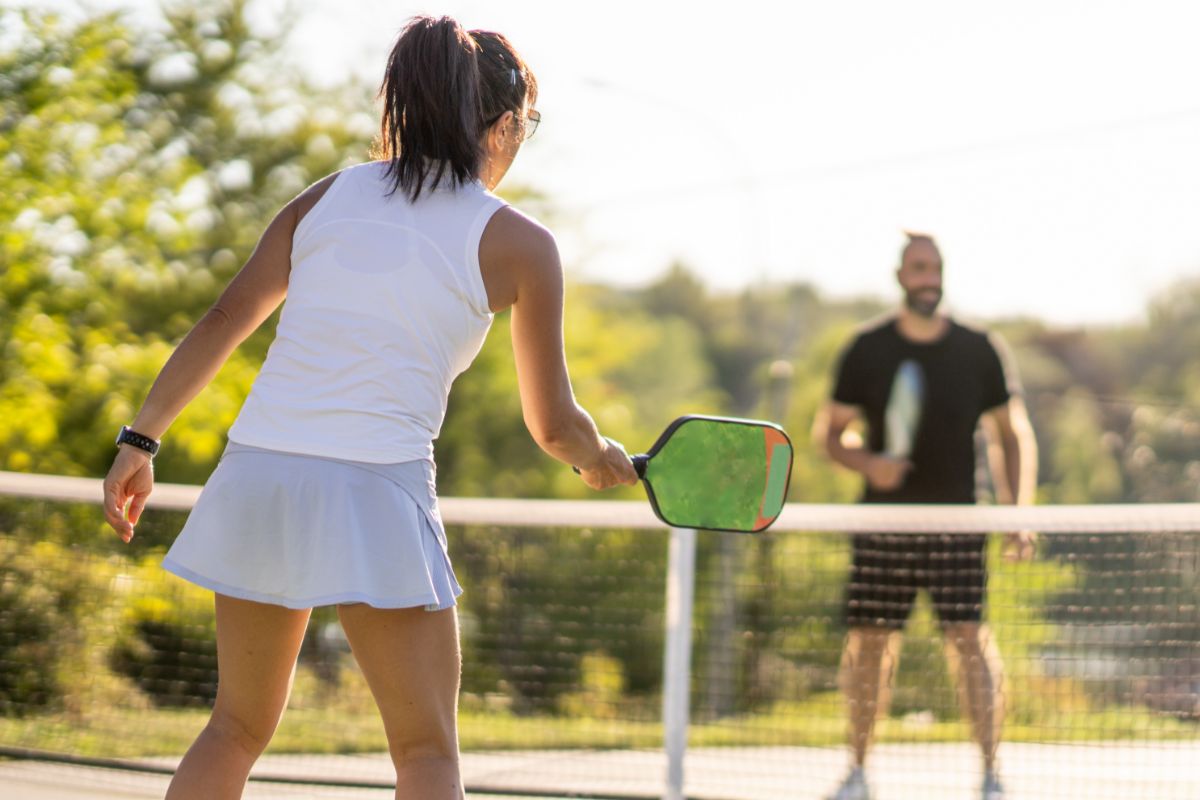
In this article, we’ll explore the rules and strategies of playing singles pickleball, so you can get out on the court and start having fun!
Player Positioning For Singles Pickleball
When playing singles, you’ll want to maintain an aggressive stance. This means that you should keep your body parallel to the center of the court, standing close enough to the kitchen line to reach any ball hit within that area.
It’s also important to remember that as long as one foot stays behind the baseline, you can move freely up and down the court.
Being able to quickly respond to shots from your opponents is crucial for success in singles pickleball. Depending on what type of shot your opponent makes, you may need to adjust your position accordingly.
In order to maximize your chances of winning a point, it’s essential that you stay light on your feet and keep your eyes focused on the ball at all times. That way, when it comes time to make a return shot, you’ll already be in position and ready-to-go.
Being able to anticipate where the ball is going next will help improve your reaction time and ensure that you stay ahead of your opponent throughout the game.
Basic Singles Pickleball Strategy
The key to winning a game of singles pickleball is to understand how to use your opponent’s position and shots against them. Here are some tips for success when playing singles pickleball:
- Use angles
- Keep your opponent moving
- Attack the net
- Make your shots count
By utilizing these strategies and techniques, you can gain an edge over your opponents in singles pickleball matches.
Serving
When you serve, you’ll want to start by standing at the back of your side of the court. The serve is always performed on the right-hand side or even side.
Next, you’ll need to toss the ball up into the air with one hand and hit it with the paddle before it hits the ground. The ball should travel diagonally over to your opponent’s side of the court, landing within their kitchen area.
If the server wins the point, they keep the serve and switch positions (to the left/odd side).
You’ll want to practice different levels of serves during play – slow ones, fast ones – so that you can keep your opponent on their toes.
Serving Sequence
In Pickleball, the server must hit the ball underhand, and it must go over the net and into the opponent’s court. When serving, a player must stand behind the baseline when hitting the ball. A serve that hits the net is called a ‘let’ and is replayed with no penalty to either player.
Point scoring begins after a successful serve; each team takes turns serving until one team reaches eleven points. Each time a team scores a point, their turn at serving ends, and it becomes their opponent’s turn to serve.
Scoring
Play begins with each team starting at zero points. The first team to reach 11 points wins the game; however, you must win by two points. A single point is awarded after every rally.
The server changes after each point scored, and when one team reaches 11 points, they are declared the winner.
If both teams get to 10 points, then a tiebreaker occurs where the first team to get 2 points ahead wins the match.
Double Bounce Rule

The double bounce rule states that when a player serves the ball, it must bounce on both the server’s side and the opponent’s side before it can be hit.
This gives each player a fair chance to return the ball. It also allows for more strategic play, as players can choose to hit the ball after either one or two bounces.
It is important to remember that if a player fails to return the ball according to the double bounce rule, they will be at a disadvantage.
Volleys
Volleys are allowed in singles pickleball, as long as the ‘double bounce’ rule has been adhered to. Players can volley the ball after it bounces on their side of the court, and before it bounces on their opponent’s court.
Volleys can be used to return a shot quickly, and they can also be used to set up a shot for a player to score a point.
Volleys require quick reflexes and a precise aim. To make a volley, stand close to the kitchen line, preferably within reach of it, and hit the ball back quickly after it bounces in your court.
Your racket should be angled slightly downwards as you make contact with the ball, otherwise you risk hitting it too high.
Line Calls
Making the right call on a line shot can make or break a point. The best way to get a proper read on a line shot is by having one player focus on the ball as it crosses over the line, while the other player keeps their eyes focused on where they believe the ball landed.
Doing this will help ensure that both parties have an accurate understanding of where the ball went and if it was in or out.
Faults
In pickleball, faults happen when a player fails to follow the rules. A fault may be declared if:
- The ball is served and hits the net before it reaches the opponent’s court
- The player steps into or over the non-volley zone while volleying
- The ball is hit out of bounds
- The player doubles-hits (hits the ball twice consecutively)
It’s important to remember that most faults result in points for your opponent, so you must be careful to avoid them as much as possible. Understanding how and when a fault can occur will help you stay on top of your game, and give you an edge over the competition.
Conclusion
I’m sure you’re feeling like a complete pro now that you know how to play singles pickleball. It’s an incredibly fun game, and the strategies you’ve learned will help you become a master on the court.
- What Kind Of Ball Is Used In Pickleball? - July 13, 2023
- How Much Does It Cost To Build A Pickleball Court? - July 11, 2023
- When Do New Pickleball Rules Take Effect? - July 8, 2023

